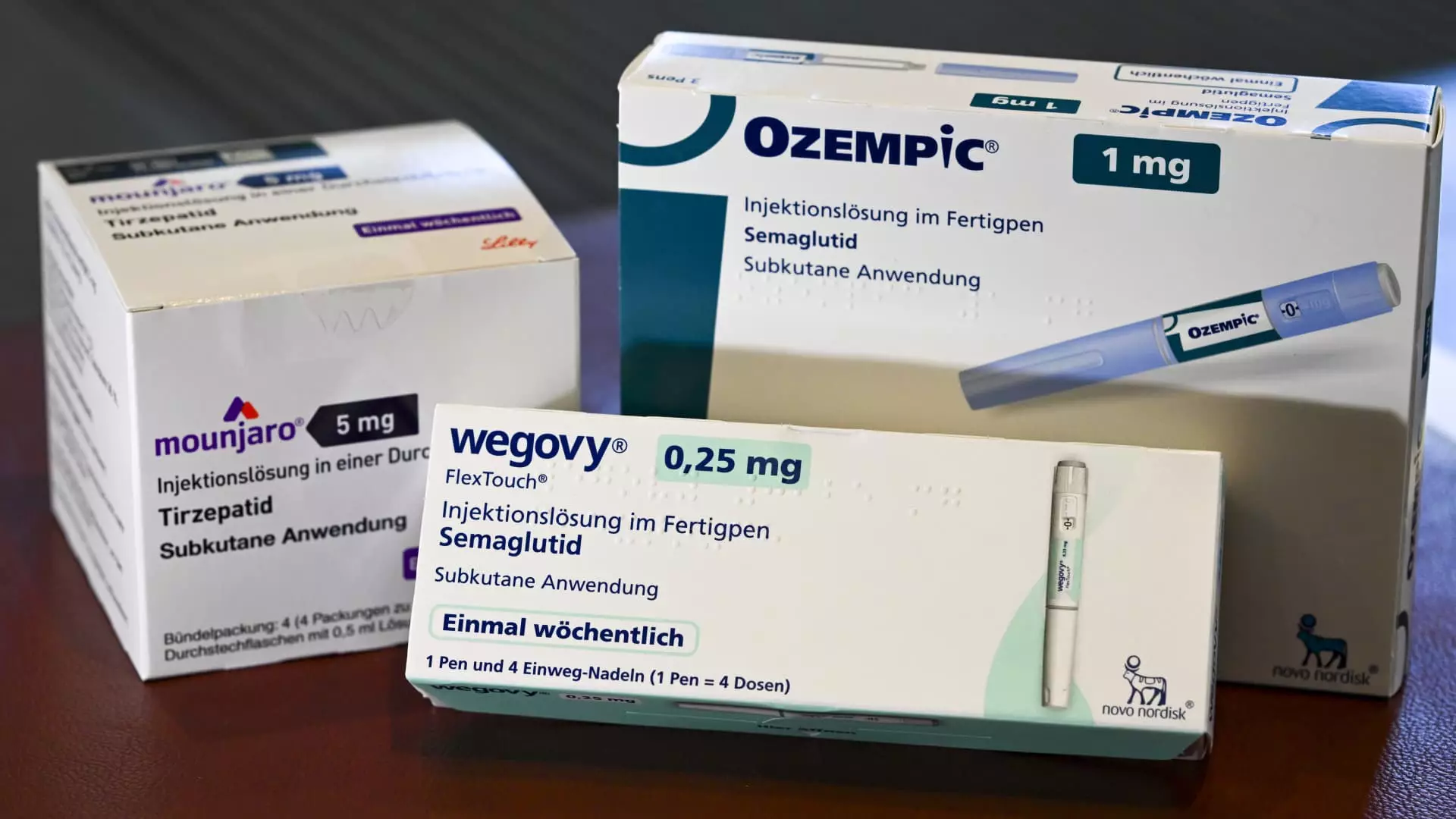The increasing prevalence of diabetes and obesity in society has led to a surge in the demand for GLP-1 medications such as Mounjaro, Ozempic, and Wegovy. While these medications show promise for improving health outcomes, the financial implications for employers are far from straightforward. The intersection of health care advancement and economic viability presents a dilemma that demands thorough examination.
Throughout the last few years, consultative firms have been working diligently to assess the real financial impact of these diabetes and weight-loss drugs on large employers. Greg Case, the CEO of Aon, highlighted the unprecedented nature of this phenomenon, boasting about the evident shift in health outcomes within a two-year timeframe. While a 44% reduction in cardiovascular issues is laudable, the price of admission into this new realm of health improvement is steep—over $1,000 per dose, to be exact, raising serious affordability questions.
High Costs vs. Potential Savings: A Balancing Act
It’s essential to grasp that while the potential health benefits of GLP-1s are compelling, the upfront financial burden for large employers raises eyebrows. Analysts at Aon have pointed out a stark contrast: employers not only face high costs from the medications but also increased healthcare expenditures in the initial year. Patients often require additional doctor visits to monitor their conditions or address secondary issues linked to obesity, such as sleep apnea and acid reflux. This apparent paradox embodies the intricacies of modern healthcare economics.
What’s striking is Aon’s finding that, over time, healthcare costs for patients on these drugs can decrease significantly. After two years, savings can reach up to 7% on average, and in some strict adherents to treatment, even about 13%. This presents an intriguing argument for the long-term utilization of GLP-1 medications—but the transition period can become a source of confusion for both employers and employees. Are companies prepared to balance the immediate costs against potential long-term benefits?
A Promising Future or a Temporary Band-Aid?
The data presented by Aon indicates that GLP-1 drugs may not only lead to improvements in patients’ health but also to a reduction in the incidence of severe health events like heart attacks and strokes. However, one cannot help but wonder if this is simply a case of newfound hope or if the economic model is sustainable over the long haul. Is the dependency on these expensive drugs truly a solution, or could it lead to a cycle of reliance on medications rather than a more holistic approach to health and wellness?
Case’s assertion that “every single place where the cost went down is stunning,” raises a crucial question: Are we allowing the allure of immediate health enhancements to blind us from addressing root causes? Weight management should ideally encompass lifestyle behavior changes, dietary adjustments, and proactive preventative measures. It’s vital that businesses don’t fall into the trap of masking symptoms with expensive pharmaceuticals without investing in comprehensive healthcare initiatives.
Corporate Responsibility and the Future of Employee Health
Aon’s introduction of a subsidized GLP-1 weight management program for its workforce reflects a proactive approach to employee wellness. By incorporating virtual wellness visits and home blood tests, the company aims to ensure adherence to treatment regimens, thus maximizing the potential benefits of these drugs. However, does this model signify true corporate responsibility, or is it simply a nifty marketing strategy aimed at offsetting the costs associated with higher healthcare utilization?
As we stand at a crossroads, the conversation surrounding GLP-1 medications raises broader implications about the corporate model of wellness. Companies must consider whether they are merely investing in medications as a quick fix or genuinely enhancing the health trajectories of their employees. The trend seems to suggest an enticing proposition, especially since the healthcare cost curve can shift favorably for those who commit to long-term strategies. Will employers take a genuine stand in re-evaluating wellness initiatives, or will the trend of GLP-1s merely serve as a temporary response to an increasing crisis?
The dialogue surrounding GLP-1 medications is multifaceted, imbued with promises of improved health but laced with critical questions about healthcare responsibility and the long-term wellbeing of the workforce. In this landscape, a more significant commitment to holistic healthcare solutions could redefine the true ambition of corporate wellness.

